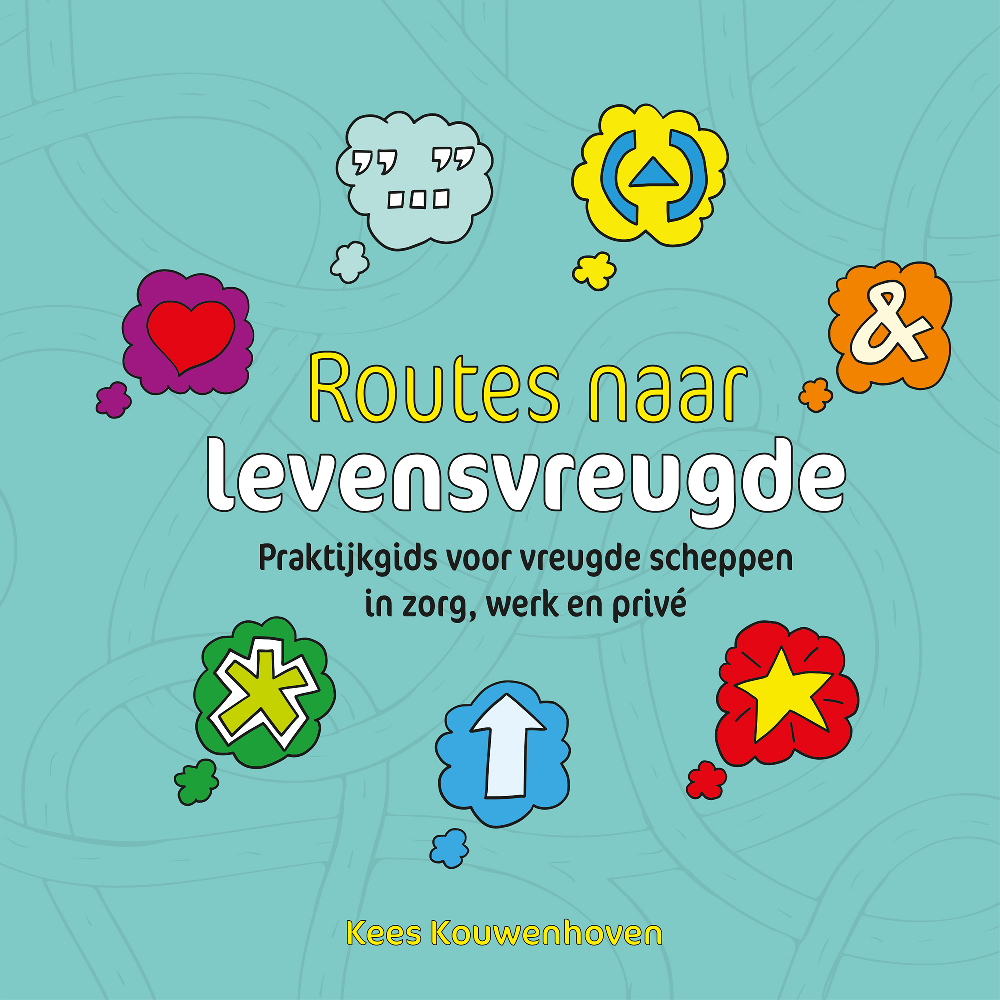
The mental legacy of Happiness
Creating more 'Living with joy and connectedness' in a fun and light weight way. Here you will read about what the mental legacy of Happiness is, what you can do with it and how you can get to work with it.
The seven sources of Happiness
I have asked many people 'what do you enjoy and what do you experience as not enjoyable?'. Out of the answers the seven sources of Happiness where created. They are recognizable in many situations: sporting, in families, during recovery of illness, children in school, in work, young adults, choice of study, elderly in a eldery home.
This is how the sources were discovered in daily life. They are tangible for everyone. They bring a language to talk about desires, disappointments, your relationship with your partner and your children, your successes. Professionals can have conversation with more depth with their patients and clients and they can help them with finding their way back again.
What can you achieve with them?
Postive health and working focused on recovery
Practical tools for working towards recovery in health care.
Joy in education
Thrive within the class and study that fits you.
Joy in retirement
Having a good life after retiring.
Comfortably getting older
Coming to justice in the elderly care.
Happinness where it is needed
In many areas there is space for bringing in 'Living with joy and connectedness'.
Thrive in your family
Strengthen the connectedness within the family.

Werkplaats 'Routes naar levensvreugde'
In de werkplaats vindt u aanvullende informatie en opdrachten behorend bij 'Routes naar levensvreugde'. U kunt het boek hier bestellen.
Why do the sources work?
In cooperation with the Free University in Amsterdam, I have conducted research into the seven sources of Happiness at Work. In this research it is showed how people with the sources are able to express their experiences much more accurate than people without the sources. When the question is asked ‘What do you derive pleasure from in your work?’, they will spontaneously answer the question with 3 to 4 of the seven sources. After being introduced with all seven sources, they all recognize these seven in their experience. Their vocabulary concerning happiness at work has doubled.
With this bigger vocabulary, people often discover more positive elements than they had expected. De negative elements, were often the ones they did know. Moreover, the sources do offer space for the negative sides of the work. They are not forcibly positive. In this way people are invited to share their entire perception.
The language of the seven sources is suitable to put the individual perspective into words and to express the organisational perspective. This way we have a ‘language’ available that is available for their personal experiences in work. They can talk more effectively about subjects like personal ambitions in work, workload and changes in work.
With this ‘language’ people have a higher variety of words to their disposal and it makes you discover more positive elements in your life. It makes it easier to discuss these elements and it gives conversations more value and depth.

View on health
The mental legacy of Happiness supports two trends in health care: working focused on recovery and positive health. Working focused on recovery means that the client connects to his or her strength and that he or she takes responsibility for the recovery process. By taking over the client actively contributes in his or her recovery process and doint this the quality of life is improved. The focus is less on the illness and more on the dynamical and positive view on health.
It is crucial for this vision that the client is aware of the situatuon and that he or she is able to put the situation in to words. The seven sources offer a language with what people can explain how they feel and with what they can contribute to the diagnosis. Consequently to this, room is created to come up with actions is your own recovery process. This strengthens the motivations to take over your own recovery process and to actually put ideas in action.
The tools of the mental legacy of Happiness are easily accessible and are inviting to clients. In this way they make this vision practicable.

The enhancers of joy
From my consultancy practice there are at least four enhancers of joy which contributed to 'Living with joy and connectedness'. They are embedded in the mental legacy of Happiness. By applying the seven sources of Happiness you automatically activate these enhancers of joy. .
1. Taking initiative
In many life areas it is difficult for other people to know what you enjoy and what you do not enjoy. If you do not explain this you will often not receive what you actually need. That's why it's important to take initiative and to bring forward your own experience.
Taking initiative also relates to having a good connection with yourself. This is the foundation for 'Living with joy and connectedness'. The sources offer a language for this connection: feeling at home in your own body, appreciating yourself, enjoying what you can do and accepting the things you can't do and so on. In this way you can discover which areas should be charised and which area need some more improvement, on the basis of the seven sources.
2. Connecting your individual perspective on your life with the perspective of your surroundings

It is crucial for Happiness that you feel connected with your surrounding: your family, your colleagues, your team, your classmates and so on. This is a two-way street. It is important that your wishes and desires are respected in your surrounding. Your personal perspective is seen and heard. From the other side it is important that you respond to wishes and desires of your surrounding. This asks for permanent attention as this is constantly dynamic. The seven sources offer a language in which the topic connection can be discussed and which can create mutual attractiveness.
3. Focus actions on real life
The first principles only come to life in they are put in to concrete actions. This means action in real life: in your family, at work, at school. It is not about successes in the treatment room or the virtual world. If you put in work in real life, step by step improvement can be noticed in your life. This can create a virtuous circle of Happiness.
4. Emphasize on strength, energy and the positive
You can experience Happiness if you are able to shift the focus to the things you can do. We know how paralizing fear can be, the opposite of this principle. With the mental legacy of Happiness you can discover the strength of optimism and you can learn how this can be applied for you and for other people.

Happiness supports working with the focus on recovery and positive health
With the seven sources 'language' people are better able to explain how they feel and they can contribute to the diagnosis. On that basis you are allowed to come up with actions yourself. This strengthens the motivation to take over and to actually put words into action.
Do you want to get to work with the mental legacy Happiness?
There are many reasons for getting to work with the mental legacy of Happiness. You can enlarge your professional repertoire. You can work more effectively as for example a handler, coach, HR professional and policy maker. You can also applie the mental legacy of Happiness in your direct surrounding for your family and friends, your school and such.
Have you gotten enthusiastic and you want to get to work? That is possible. You can independently practise the ideas after a training. Of course yo can also contact our advisory desk.






